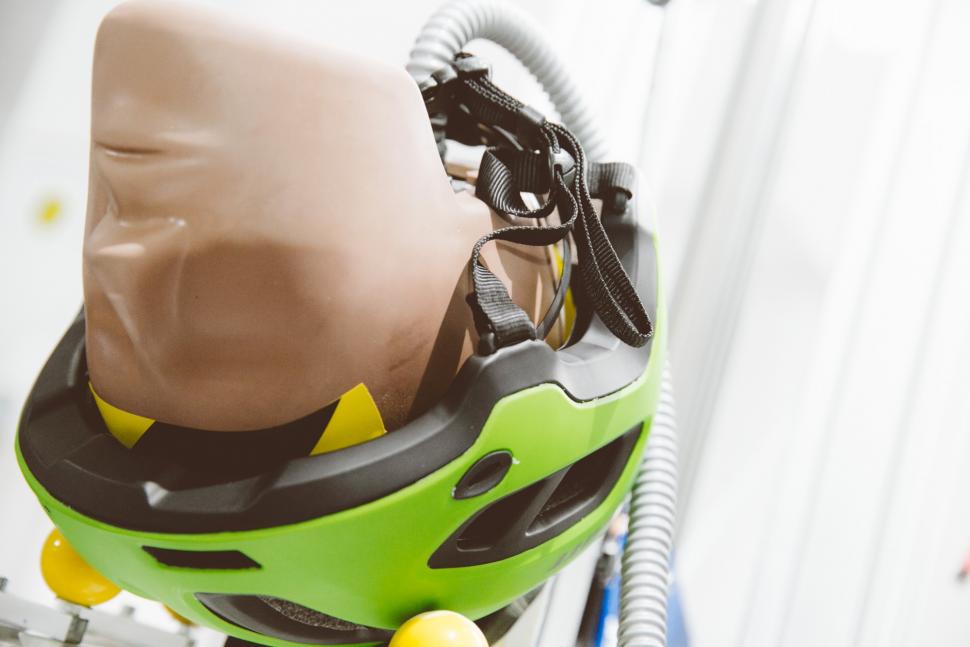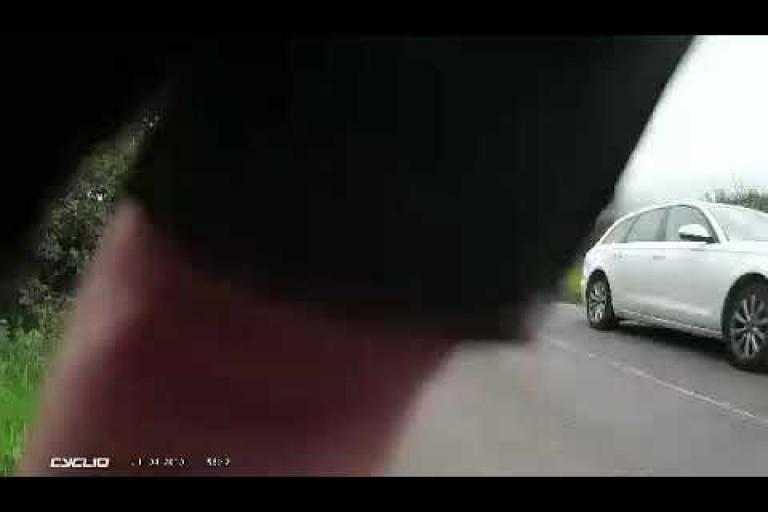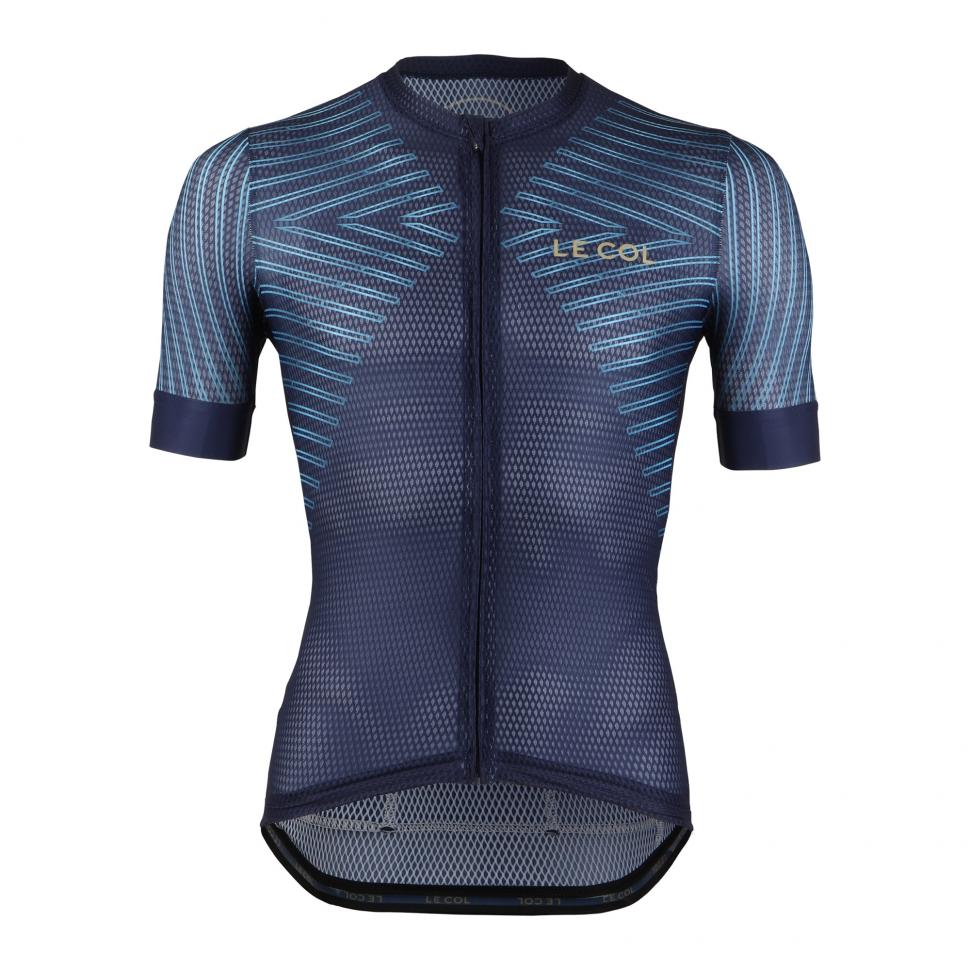- News
- Reviews
- Bikes
- Accessories
- Accessories - misc
- Computer mounts
- Bags
- Bar ends
- Bike bags & cases
- Bottle cages
- Bottles
- Cameras
- Car racks
- Child seats
- Computers
- Glasses
- GPS units
- Helmets
- Lights - front
- Lights - rear
- Lights - sets
- Locks
- Mirrors
- Mudguards
- Racks
- Pumps & CO2 inflators
- Puncture kits
- Reflectives
- Smart watches
- Stands and racks
- Trailers
- Clothing
- Components
- Bar tape & grips
- Bottom brackets
- Brake & gear cables
- Brake & STI levers
- Brake pads & spares
- Brakes
- Cassettes & freewheels
- Chains
- Chainsets & chainrings
- Derailleurs - front
- Derailleurs - rear
- Forks
- Gear levers & shifters
- Groupsets
- Handlebars & extensions
- Headsets
- Hubs
- Inner tubes
- Pedals
- Quick releases & skewers
- Saddles
- Seatposts
- Stems
- Wheels
- Tyres
- Health, fitness and nutrition
- Tools and workshop
- Miscellaneous
- Tubeless valves
- Buyers Guides
- Features
- Forum
- Recommends
- Podcast
news
Labour MP uses falling tree clip to argue against Low Traffic Neighbourhood plans; Helmets not designed to reduce injury "when impacts involve a car", says Giro developer; Cyclists attacked by rogue buzzard; Bike theft 'up by 50%' + more on the live blog
SUMMARY
 tree falling in london - via twitter.PNG
tree falling in london - via twitter.PNG06 July 2020, 14:45
Labour MP uses falling tree clip to argue against Low Traffic Neighbourhood plans
Scary incident in South Ealing. Luckily everyone unscathed.
Makes this proposed madcap scheme that will gridlock the hood and cause mayhem for emergency vehicles even more ludicrous. Please object https://t.co/5SjhNV4Xns https://t.co/KwO6Er7Knj
— Rupa Huq MP (@RupaHuq) July 5, 2020
Rupa Huq, who is the MP for Ealing Central and Acton (and sister of television presenter Konnie Huq), has puzzled social media by saying that terrifying footage of a tree falling inches away from a bystander makes plans for a Low Traffic Neighbourhood in the area "even more ludicrous."
What has the tree falling over got to do with anything other than the wind... Showing quite a bias with this tweet.
— marksuttonbike (@marksuttonbike) July 6, 2020
Paging @LabourCycles . Cos really this is a deeply problematic tweet. 1. The tree isn't linked to the scheme. 2. The scheme isn't madcap or ludicrous nor will it cause gridlock and mayhem. What does is motor traffic in your hood that is already destroying lives of poorest.
— Simon Munk (@psimonk) July 6, 2020
how have you managed to link the falling of a tree to emergency service access?
— 🤞🏻Andy 🤦🏼♂️ (@andymatthews) July 6, 2020
As far as we can tell, Huq is trying to say that emergency vehicle access would be negatively affected if cars were restricted on the road... which most likely wouldn't be the case with less traffic around. The petition she's cited claims that local residents are unhappy with the proposed plans for a LTN between Bramley Road and Airedale Road. It says:
"The proposed plan is impractical and counterproductive to the LTN objectives. Should the proposed plan be submitted and accepted in its current form, it would force the road traffic from the existing 400+ residential units affected, through one single-lane residential street. The proposed plan is counterproductive to LTN objectives as it will increase the traffic along the route at least threefold (more than negating the anticipated 15% reduction from such a scheme). Furthermore, the traffic will not be able to flow bi-directionally as the route is too narrow. The cause is likely to be significant congestion which will increase engine idling and fuel consumption thereby delivering a negative impact on the quality of air which is already exceptionally poor.
"We note concerns that congestion may cause problems for emergency service access. Our elderly, vulnerable and residents in poor health have increased dependency on emergency and medical services during this COVID 19 pandemic when timely interventions are sometimes critical."
A lot of people seem to disagree...
Rupa, it’s the excessive number of vehicles being driven on short journeys that gridlock the neighbourhood. Not active travel schemes that allow for a more space efficient means of transport.
— Richard Warner (@rgwarner) July 6, 2020
Rupa, you’re one of the most sensible MPs I’ve seen on TV.
This tweet is not sensible.
I cannot fathom how you are linking low traffic neighbourhoods to falling trees.— Najeeb Khan (@najeebster) July 6, 2020
This is an outrageous comment. Less cars = quicker response for emergency vehicles. Please retract. @LabourCycles
— Ruth Mayorcas (@RuthMayorcas) July 6, 2020
06 July 2020, 15:23
Alex Dowsett takes offence to Griff Rhys Jones' 'Off your bike!' article in Daily Mail
@G_RhysJones I wasn’t much of a fan of your article in the mail. Whilst the facts of cyclists being on the footpath I believe to be wholeheartedly true, your descriptions of cyclists are exaggerated; depicting cyclists as “yobs”....
— Alex Dowsett (@alexdowsett) July 6, 2020
The Israel Start-Up Nation rider explained in a Twitter thread that he "wasn't much of a fan" of the article from the 66-year-old presenter, that was published in the Daily Mail this morning.
Dowsett continues: "Whilst the facts of cyclists being on the footpath I believe to be wholeheartedly true, your descriptions of cyclists are exaggerated; depicting cyclists as “yobs”...
"...Claiming they’re travelling at 40mph on a footpath is absurd and the general tainting of the image of people no different to you keeping fit is disappointing.
"Even the headline, “Lycra clad Hooligans” is a bit much considering the dog owners that can’t clean up after themselves are simply brushed off like it’s very little, shouldn’t that headline have been; “Sh!t smearing wannabe tiger kings?”
"There’s a lot of cycling acts I don’t condone, along with the acts of some walkers, horse riders, drivers etc, but what won’t help is driving a harder wedge in between the divide that the media seem intent on creating. We share this planet, these roads and we all make mistakes.
"We all enjoy being part of groups/societies/clubs yet we don’t necessarily agree with what everyone in them do. The article could’ve been very different, instead of “us angels & them villains” how about “making it safe for everyone to enjoy East Anglia through signs, respect and education” but then I guess the mail would’ve ignored your work."
06 July 2020, 13:52
Delfast fail to make their bike pull an aircraft... because its own 'safety shutdown' system was activated
Ukranian e-bike innovators Delfast - who hold the world record for the biggest range on an electric pedal-assist bike (a claimed 321km, or 200 miles) - have attempted to set another world record by getting their supercharged TOP 1.0 model to pull a Yak-18T aircraft weighing 1.7 tons. They failed, but have made a video about it anyway.
"The trial happened to be not as successful as expected, and yet it was very productive and effective for the team", explain Delfast.
"The TOP 1.0 is designed for long distance riding and was not originally intended to perform such tasks. This explains the results received by the team in the course of the experiment.
"Particularly, it was observed that the e-bike’s motor has enough power to move the aircraft. Yet, the bike did not make a move. The reason was that the safety shutdown system was activated."
CEO Daniel Tonkopiy has promised to find a way to bypass the electronics that shut the engine off when trying to haul such huge loads, so eventually they can make Delfast models to be used by farmers and distribution workers that can pull loads that weigh over a ton.
With a top speed of 80km/h and a huge 3,000 watt rear hub motor, it goes without saying that you'll be needing a licence and insurance to ride the latest Delfast Top 3.0 on public roads in the UK...
06 July 2020, 12:50
Cyclists attacked by angry buzzard in North Yorkshire
Cyclists have been warned to be aware of a rogue buzzard that is said to have attacked numerous times on a country lane in the North Yorkshire district of Hambleton, reports Hambleton Today.
A resident who lives near the lane, between the villages of Thornton-le-Beans and Thonton-le-Moor, has contacted North Yorkshire County Council to ask for signs to be erected to warn passing cyclists. Another resident said they believe the buzzard went for cyclists who run "flashing red lights" on their bikes, coupled with the theory that the birds become territorial when their young are being readied to leave the nest.
While such attacks from buzzards are rare, in Australia magpie attacks are a regular occurrence during magpie mating season, and half of all reported victims are cyclists. Frighteningly it's thought that magpies also remember their victims, so if you've been attacked once, it's more likely you will be attacked again. Many cyclists Down Under attach cable ties to their helmets to deter the birds from swooping down on them when attacks are most common between August and November.
06 July 2020, 12:03
Bike helmets "not designed to reduce chances or severity of injury when impacts involve a car", says Giro development manager
In an interview with Cycling Industry News, Giro's Senior Brand Development Manager Eric Richter says there are "many misconceptions about helmets", and that when it comes to collisions with motor vehicles, it isn't possible to design a bicycle helmet specifically built to protect the user:
“We do not design helmets specifically to reduce chances or severity of injury when impacts involve a car", said Richter.
"... the number of variables is too great to calculate – the speed of the car, the mass, the angle of impact, the rider, the surface, the speed of the rider, did the driver or rider swerve a little or hit the brakes before impact. All of these variables and more are unique in every instance, and there is no way to accurately predict what is going to happen or the forces involved.
“We are mindful of the different types of brain injuries including CTE, and ongoing advances in understanding them. But the common factor in brain injuries is force transmitted to the brain. That common factor is the realm where we have potential to make a difference, and it does not change over time. Therefore we emphasise a simple, unwavering mantra: Less energy to the brain is better protection. On the other hand, the understanding and emphasis around various types of head and brain trauma will continue to evolve, and the effects from an impact or multiple impacts are unknowable variables due to the fact that each impact is a unique event and every rider is unique and changing over time. So, by keeping our primary focus on reducing energy, we keep moving ahead in a way that can theoretically benefit every rider in every impact.”
In answer to the article's question "Are helmet standards overdue a revision?", Richter says that creating new helmet standards to increase rider safety is "much broader and deeper than most people realise", because "no two standards are the same, so different helmets require different test protocols":
“In the last few years, greater emphasis on addressing rotational forces has had a significant impact on helmet design, technology, engineering and testing. Therefore, understanding the effects of rotational motion on the brain, and working to reduce rotational forces by integrating technologies like Spherical Technology and the MIPS Brain Protection System into helmets during the last 5-10 years is the most visible example of how head protection is evolving in response to increased knowledge.”
06 July 2020, 14:17
06 July 2020, 11:56
Le Col unveils Recycled Pro Air jersey
British bike clothing brand Le Col has unveiled a new Recycled Pro Air jersey that’s made from recycled sea plastics.
The recycled nylon comes from Nurel, and is said to undergo a mechanical process that reduces CO2 emissions by 53%.
“The recycled elastane, sourced from Asahi-Kasei that has a plant in Germany, ensures less handling of hazardous chemical compounds, less air emissions and less energy consumption,” says Le Col.
The breathable 3D-mesh jersey is designed for use in temperatures from 20°C upwards, and is said to weigh just 103g (size medium).
Other brands already use fabrics made from recycled materials, of course. The Scimitar Eco1 Recycled Cycling Jersey that we reviewed recently is made from recycled plastic bottles, for instance.
The Le Col Recycled Pro Air Jersey is available in men’s sizes XS to 3XL and is priced £120.
06 July 2020, 11:08
Euston Road pop-up finalised overnight
Big thank you to the @TfL teams who started installing the Euston Road cycle lanes overnight. https://t.co/ADk0o8dkxr
— Will Norman (@willnorman) July 6, 2020
One of the busiest roads in the capital is getting the emergency cycle lane treatment, with lanes now installed on both sides of the road.
Transport for London announced the Euston Road pop-ups last week; and although they will inevitably have to be dismantled when work on HS2 begins in late 2021, TfL say they will "work with local boroughs to develop alternative routes along side streets" when that happens.
Euston Road cycle lane Eastbound this morning pic.twitter.com/CO2tK40O8A
— Simon Lamrock (@SimonLamrock) July 6, 2020
06 July 2020, 09:49
A third of drivers in Scotland don't leave enough room when passing cyclists, according to new Cycling Scotland campaign
Driving too close to people cycling is an offence and can result in 3 points on your licence. Today we launch our #GiveCycleSpace campaign across Scotland - RT to support. pic.twitter.com/172ljeC3NB
— Cycling Scotland (@CyclingScotland) July 6, 2020
Cycling Scotland's #GiveCycleSpace campaign has launched today, and the charity say that as well as the headline stat, their new survey of 1,500 Scots found that 80% say overtaking cyclists is "frustrating". Two thirds also didn't realise they could get three points on their driving license for close passing, and the percentage of those who admitted to not always giving at least 1.5 metres when passing a cyclist was 34%.
Cycling Scotland's Chief Executive Keith Irving says their 2020 campaign is "more important than ever", as statistics show that Scotland has seen a 77% increase in cycling during the lockdown:
“Cycling reduces our carbon footprint, improves our air quality and is fantastic for the nation’s health, and for those reasons we have to make sure this renewed enthusiasm for cycling continues and expands", says Irving.
“People driving need to be aware of vulnerable road users around them and give at least a car’s width and even more when passing at higher speeds. Often that means waiting at a safe distance until there is space to pass.
“Many people don’t realise that driving too close to someone is damaging even when no contact is made and can put people off cycling. Concern about road safety is also the main reason people don’t get back on their bike.”
There's more info on this Cycling Scotland's road safety campaign here.
06 July 2020, 11:20
06 July 2020, 09:37
Cars parked in the (pop-up) cycle lane again
I guess it’s okay to park where you like because I needed a Five Guys! It be good for enforcement here becuase simple asking for people to RESPECT the rules isn’t working! pic.twitter.com/OBPYuV2eBz
— Thomas O Cornwallis (@UrbanistTOC) July 5, 2020
Sadly as we reported last week, the sight of new pop-up cycle lanes also serving as car parking spaces is becoming all too familiar.
06 July 2020, 09:10
"The right to complain about cyclists has been granted": paying your road tax...
Paid my Road Tax (vehicle excise duty) A generous contribution to the up keep and maintenance of the roads. The right to complain about cyclists has been granted, they don't pay road tax, therefore have have no right to be on the road or have the cheek to ask for their own lanes pic.twitter.com/Yvr1zX9fnb
— James Stafford (@Jamesdestafford) July 5, 2020
Yes it is satire, and the person who posted their £0 VED contribution continues: "In 2012 the negative externalities of cars were costing every EU citizen £600. In 2012 there was a £10 billion shortfall between Fuel Duty/VED and the costs of motoring. Given Fuel Duty has been frozen for a decade. The costs are likely to be much higher now."
06 July 2020, 09:02
Former Shimano president Yoshizo Shimano dies aged 85
Yoshizo - the grandson of the company's founder Shozaburo Shimano - has passed away after suffering chronic heart failure. He served as Shimano’s President of American trade from 1965 until he was made president in 1995, and finally the chairman in 2001. He also served as president of the Bicycle Association of Japan, remaining an honorary Chairman since 2011.
Shimano said in a statement: "The contributions he made to Shimano’s business cannot be measured and his impact will be felt forever.
"On behalf of our management team and employees, we extend our deepest condolences to his family.
"The funeral has been held by close relatives, with his surviving wife, Ms. Ikuko Shimano, representing the family."
06 July 2020, 09:20

Join us on Zwift tonight at 7pm BST
Once again we're heading to the traffic-free roads of Watopia tonight for another round of Ride Your Socks Off!
It's a category D week this week, and tha means a gentler pace and a flatter route. The ride will be just over an hour, and we'll give away socks on the hour to one lucky rider. So if you're planning to train indoors tonight, why not join us?
06 July 2020, 08:26
Bike theft up 50% in past month, according to insurance firm
New data from insurance firm Urban Jungle suggests that bike theft is on the rise again during lockdown, with claims up by a half in the past month. This backs up research from Admiral, who said they saw claims rise by 46% back in May.
Urban Jungle also say enquiries for bike insurance are up 60%, and thieves are becoming more sophisticated when it comes to picking which bikes to steal. CEO Jimmy Williams says: "Thieves have a great knowledge for which brands and models are expensive. We rarely see bikes worth less than £500 being stolen.
"Bike-related insurance claims are nearly all for theft, which is particularly common across big cities - there were around 287,000 victims of a bicycle theft from July 2018 to June 2019 in England and Wales."
Worryingly for those who think their bikes are completely safe stored in on-street Bikehangars (pictured above) is that thieves 'appear to have worked out how to get into' them, claim Urban Jungle. The award-winning bike storage solution developed by Cyclehoop was first introduced in London, and they are now regular fixtures in residential streets across the capital.
Urban Jungle recommend cyclists join Bike Register, buy a decent lock, park it somewhere well lit and busy and remove accessories to lessen the chance of your pride and joy being pinched.
*Since this blog post was published, Cyclehoop have since been in touch and told road.cc: "Over the past few months during the lockdown, cycling has seen incredible growth with record numbers of bicycles being sold across the nation. Unfortunately, cycle theft has also jumped with thieves targeting cycles stored in sheds, garages and gardens. As a result, we have noticed an increase in attacks on Bikehangars using new methods and tools. Working in partnership with the councils, we have designed and fitted additional security features to eliminate this problem."
06 July 2020, 08:54
Man cycles 2,000 miles from Aberdeen to Greece to get home to his family
'Homesick' 20-year-old student Kleon Papadimitirou decided to take matters into his own legs when travel restrictions meant he was unable to fly back to Athens for summer after his term finished... so he spent seven weeks cycling 2,000 miles across six countries instead. He's now spoken to the BBC about his journey.
06 July 2020, 08:14
Weekend catch-up
Busy getting a haircut, or experiencing the 'new normal' at your local? Here's what you missed in the world of cycling...
Britain's looming bike shortage: why you should buy your next bike now
Bikeability training to be offered to adults in England from August
Near Miss of the Day 435: Close pass followed by right hook
Star cricketer arrested after cyclist killed in Sri Lankan capital
Another thief has been jailed for stealing bikes from Nottingham NHS workers
Nairo Quintana hit from behind during training ride
Video: Atlanta police officer borrows cyclist’s bike to catch murder suspect
Jack has been writing about cycling and multisport for over a decade, arriving at road.cc via 220 Triathlon Magazine in 2017. He worked across all areas of the website including tech, news and video, and also contributed to eBikeTips before being named Editor of road.cc in 2021 (much to his surprise). Jack has been hooked on cycling since his student days, and currently has a Trek 1.2 for winter riding, a beloved Bickerton folding bike for getting around town and an extra beloved custom Ridley Helium SLX for fantasising about going fast in his stable. Jack has never won a bike race, but does have a master's degree in print journalism and two Guinness World Records for pogo sticking (it's a long story).
Add new comment
42 comments
Rome73
|
4 years ago
2 likes
The worst thing about that Huq petition and tweet is not just the cliche lies about pollution being caused by active travel and cycle lanes causing 'traffic chaos' and all the other small minded, ignorant myths about reducing motor traffic she peddles but her use of the word 'hood'. Yuck, you ain't in South Central Los Angeles bitch you're in Ealing. Don't try and get with the yute.

The worst thing about that Huq petition and tweet is not just the cliche lies about pollution being caused by active travel and cycle lanes causing 'traffic chaos' and all the other small minded, ignorant myths about reducing motor traffic she peddles but her use of the word 'hood'. Yuck, you ain't in South Central Los Angeles bitch you're in Ealing. Don't try and get with the yute.
That must be the longest, rambling diatribe of a petition ever, and I didn't even get to the bits about active travel.
Gary's bike channel
|
4 years ago
0 likes
anyone who rides at anything over 10 mph will understand the issue. We cycle on the pavement because the council TOLD us to. They stick this stupid little blue shared path symbol on it and apparently this makes it a cycle lane, not just a pavement. So the pedestrians are now facing cyclists in their space, going at much faster speeds than them. Even at 15 mph, a cyclist is five times faster than a ped. Thats like us cycling at ten mph next to vehicles going 50 mph. The idea we are going 40 mph is stupid. 20-30 mph tops. Obviously itll seem faster to a ped. Blame the council for trying to force us together. We cycle on the pavement because retarded councils think a bicycle is a pedestrian with wheels. I'm now refusing to slow down on shared paths. If i want to go at 30 mph, i do it. If pedestrians dont like it, they can tell the council and force them to scrub out that dumbass little blue sign and either get us our own dutch style cycle lane, or leave us on the road, where we belong. Putting bicycles on the pavement pisses off pedestrians. Why think we go together? a wheelchair bound 90 year old cant compete with usian bolt........magic white paint on pavement dont make it a cycle lane ya twats at the council.

anyone who rides at anything over 10 mph will understand the issue...
I think if Griff Rhys-Jones were to encounter you on a shared use path, then he would be justified in spouting off the cliched stereotype drivel about lycra louts.
I had a quick look at the route past Griff’s house and it goes down his drive, right between his house and garage. It’s slightly downhill and there’s even a strava segment. The current KOM holder clocked 25mph through the gap between the house and garage - which in my opinion is quite inconsiderate.
Please don’t give the DM any more fodder.

its the Suffolk coast & heaths path,some of which Im sure is cycle route, its not Griffs actual driveway, and Im sure anyone who has ridden it was mindful of other people being around, its not a route that looks any different from the Alton Water trails, for which I dont know why Griffs son thought the visitor centre closure was a catalyst for an increase in cycling, since the bike hire shop was shut,the car park was shut, you could only get to that part of Suffolk really unless you rode your bike there and actually those roads were all pleasantly car free at the time anyway, I never trust those coast path routes much anyway as they can be a complete nightmare to cycle on and inevitably overgrown/coastal eroded at points, which arent so much a problem for ramblers.
But Cycling UKs advice is where the surface and width of the path make it eminently suitable for safe cycling without causing disturbance or risk to pedestrians its acceptable even though technically its wrong, and Id class that route as falling under those considerations. Griff is probably more worried that people will try and claim some presumed rights of access to it and create a cycle path out of it, (be a good route too all the way from Cattawade link up the Stour Valley around the Shotley peninsula,Alton Water etc etc) so unless periodically he challenges the access in a visible way and what better way than to have a national newspaper state it all very clearly and with the nice council agreeing too, its only a permitted footpath for walking.

its the Suffolk coast & heaths path,some of which Im sure is cycle route, its not Griffs actual driveway,
Griff is probably more worried that people will try and claim some presumed rights of access to
The bit of the path that goes across his front lawn and then down past the side of his house, crossing his driveway between the house and garage is a bonefide public footpath. It's marked as such on the Suffolk definitive map.
The only bit that is 'permissive' is at the very bottom of his land, there is a short track by the church that links to the road. The official right of way stops on the parish boundary, so it's more than likely it was always a right of way, just this little bit got missed off the definitive map.
I too think that cycling ougth to be allowed on public footpaths. I think it would be perfectly acceptable here too, as long as people were considerate when passing the house.
A quick Bing! brings up:
- 'Griff Rhys Jones attacks green energy desecration of...'
- 'Griff Rhys Jones on his crusade to stop wind farms'
- 'Griff Rhys Jones: I may flee UK over Labour's mansion tax'
He fits right in at the Daily Mail. It was surely only a matter of time before he started having a go at people on bikes.


Indeed, all of his grumbling seems to fall into the "if you go away, my life would improve" variety. In other words, presisely the sort of grumpy old man moaning that he made a career of parodying. Funny, eh?
Parodying? Just practicing. Is anyone else old enough to remember when he used to be funny?


brooksby
|
4 years ago
1 like
I'm no expert but i think what happens is that over the decades contractors working on utilities (installing water, cables, Interweb etc) cut trenches through the roots. And then the pavement layers remove roots to flatten the service. And bit by bit the tree is killed and falls over.
hawkinspeter
|
4 years ago
4 likes
I once knew a buzzard who had a rebellious son. He would preen his feathers so they stood up, hang out with raccoons, and generally be a nuisance to the rest of the flock.
Thinking that it was just a phase, his father didn't worry too much about it and hoped that one day his son would grow up. However, one day his son came home with terrible news: "Dad, I've made up my mind I'm going vegetarian!"
He could accept anything else, but that! Shocked, he threw his son out of his house. As the months and years went by, he regretted his decision, and decided that maybe he should try to understand his son's point of view. So he read up about the nutritional value of plants, looked up recipes, and even asked the neighbouring squirrels about what they ate.
Finally, one cold evening, he decided that it was time to try out eating plants. Peas were a good place to start- they were high in protein, like the rotting flesh he usually ate, and they were easy for him to eat with his beak. So in addition to his usual plate of roadkill, he put on a pot of peas to boil.
Suddenly there was a knock at the door. He opened it and gasped with surprise- there was his son, thin as sticks and weak as water! His son collapsed into his wings, and managed to croak out,
"Dad, I'm starving. Do you have anything for me to eat?"
Crying at seeing his long-lost child after so many years, he nodded and said,
"Carrion, my wayward son! There'll be peas when you are done."


It is a buzzard. Just not one you're likely to see in North Yorkshire (unless it's escaped from somewhere):



mdavidford
|
4 years ago
1 like
What does "create helmets that provide relevant coverage so that riders wear them whenever they ride" mean? Is it referring to physical coverage of the head? Coverage of (i.e. protection against) different types of impact? Meeting different types of test? And why would it influence how consistently people wear them?


eburtthebike
|
4 years ago
1 like
Eric Richter is refreshingly honest, considering his company makes things that don't work and can't be taken back when they fail; just a licence to print money by exploiting natural gullibility.
This caught my eye “What we do is work to make riders more visible, create helmets that provide relevant coverage so that riders wear them whenever they ride, and advocate for better infrastructure to help reduce the chances that you’d encounter an impact with a car.”
He seems to be admitting that helmets don't protect, and that the incidental things, like visibility is their only real effect; who knew? Everyone who's read the research, that's who. Why would someone whose income is dependent on selling bits of ineffective plastic be advocating for something which would make those same useless pieces of plastic even more useless? I can't ever recall a helmet company campaigning for better infra.

Eric Richter is refreshingly honest, considering his company makes things that don't work and can't be taken back when they fail; just a licence to print money by exploiting natural gullibility.
You know perfectly well he said nothing of a sort, simply that helmets are designed to mitigate brain injury in every type of impact, including those with cars. If you have to stoop to that level of intellectual dishonesty to make your point, the point's not worth making (and Christ knows you've made it so, so, so very often here and elsewhere).

Eric Richter is refreshingly honest, considering his company makes things that don't work and can't be taken back when they fail; just a licence to print money by exploiting natural gullibility.
You know perfectly well he said nothing of a sort, simply that helmets are designed to mitigate brain injury in every type of impact, including those with cars. If you have to stoop to that level of intellectual dishonesty to make your point, the point's not worth making (and Christ knows you've made it so, so, so very often here and elsewhere).
Since I didn't say he said that, I'm really not sure what point you're trying to make here, let alone calling me dishonest.
Pages
Latest Comments
- mark1a 19 min 7 sec ago
Thanks to all at road.cc HQ, I received my t-shirt, socks and stickers in the post this morning. Stickers are already being stuck:
- GManLondon 46 min 36 sec ago
Ahhh, get you 👍🏻 The number seems huge, but when I see the damage causes to the road at bus stops/stands, it does make sense
- ubercurmudgeon 1 hour 20 min ago
Is a picture knocked up in an afternoon using Photoshop and/or generative AI, whose designer probably has no idea how to begin to make it a reality...
- Simon E 2 hours 7 min ago
The total cost of putting a complete bike on a UK showroom floor is considerably more complex than the Bank of England's inflation figures. Some...
- Hirsute 2 hours 15 min ago
"Around 200 cars" parked up along part of the Peak District have prevented gritting taking place....
- chrisonabike 2 hours 40 min ago
I know that was Sir Clive's vision though - an actual mainstream car replacement....
- hawkinspeter 2 hours 54 min ago
There's plenty of traffic along Avonvale and Marsh Rd already without needing to encourage it.
- brooksby 2 hours 56 min ago
It's terrible that even when the burly security guard challenges him, and tries to take the bike back, the thief won't let go, just keeps pulling...
- chrisonabike 3 hours 7 min ago
Ah, one of those anachronistic objects! I'm just waiting for "Prius found in prehistoric passage grave". (Maybe left as an offering after its...
- Wingguy 3 hours 54 min ago
That'll be why climbers have such bigger quads than TT specialists and sprinters then.







